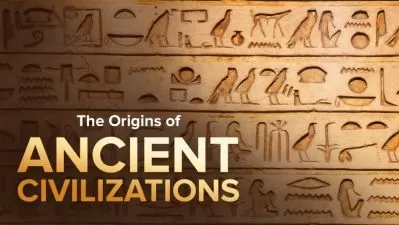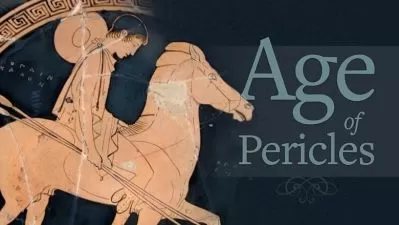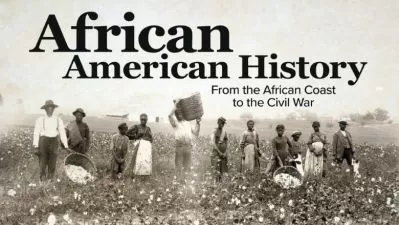A New History of Life
Stuart Sutherland
17:13:21
Description
Life is stranger than fiction. Recent investigations hint at episodes in the history of life on Earth that rival the most imaginative movies. For example: Could our planet have been seeded with life from elsewhere? Did the development of life create conditions that threatened to poison the biosphere? How have natural forces conspired, over and over, to remove most traces of life from the planet? And how has life itself responded with determination to survive and thrive in a multitude of astonishing forms?
The story of our world and the different living things that have populated it is an amazing epic with millions of species both familiar and strange, exotic settings, planet-wide cataclysms, and surprising plot twists. Humans are only the latest characters in this long-running drama, which has always been utterly unpredictable, since periodic mass extinctions are inevitably followed by life rebounding in unexpected ways. Indeed, life and the planet have developed together, each driving the evolution of the other.
Equally intriguing are the details of how scientists know what they do about the past. It is a detective story as riveting as any forensic thriller, with paleontologists and geologists taking the most unassuming pieces of evidence—a bit of fossil bone, a sequence of layers in rock, a geochemical test—and reading a rich narrative of past events. And by drawing on tools from other disciplines, such as biology, meteorology, and astrophysics, the scenes they describe can be truly monumental in scope, encompassing the entire Earth and even phenomena beyond the planet.
This multidisciplinary effort to understand Earth as a whole, as a system composed of many interacting parts, is called Earth system science, and it has given us an unprecedented understanding of the planet and the unfolding panorama of life.
A New History of Life tells this all-embracing story of life on Earth—its origins, extinctions, and evolutions—in 36 lavishly illustrated lectures that assume no background in science. At half an hour per lecture, you cover the entire 4.54-billion-year history of Earth in 18 hours, averaging 70,000 years per second! Professor Stuart Sutherland of The University of British Columbia gives a gripping account, showing why he is an award-winning and nationally recognized teacher.
Cycles of Ruin and Renewal
Professor Sutherland notes that if the story of Earth is compared to the height of the Washington Monument, then all of human history is the thickness of a sheet of paper balanced at the top. He devotes most of A New History of Life to the incredible happenings beneath that piece of paper. The events before humans arrived on the scene include stirring episodes such as these:
- Snowball Earth: More than half a billion years ago, Earth apparently plunged into a frozen state, with the world almost completely iced over. According to some theories, this snowball phase should have been permanent and life eventually extinguished. But something saved the planet.
- Cambrian explosion: Before the start of the Cambrian period, life was mostly unicellular. Then complexity soared in an explosion of genetic diversification. The major new phyla and weird evolutionary dead-ends are recorded in the fossils of the renowned Burgess Shale in British Columbia.
- Age of giant insects: During Earth’s coal-forming phase in the Carboniferous period, dragonflies had 30-inch wingspans and cockroaches reached 20 inches in length. What caused the big bugs? The storage of atmospheric carbon in what became coal deposits may have played a crucial role.
- Cretaceous-Paleogene extinction: The dinosaurs and more than half of all other species were doomed after a six-mile-wide asteroid struck Earth 65.5 million years ago. The initial blast, shock wave, flying debris, fires, and tsunami were just the beginning, as the biosphere went into a cascade of failures.
By the time you reach the origin of humans in Lecture 35, you will appreciate our species in the widest possible context. The rapid burst of evolution in the Cambrian explosion, half a billion years ago, produced innovations that we share with other creatures, such as eyes, teeth, and skeletons. The first vertebrates—animals organized on a central backbone like ours—appeared tens of millions of years later, and the first humans only comparatively recently. With our distinctive bipedal posture, consciousness, and language ability, it may seem that our evolution represents a triumph over other complex vertebrates. But you may be surprised by our probable descent from hard-pressed primates driven into increasingly marginal ecological niches.
A Story Full of Surprises …
A New History of Life gives you the conceptual tools to follow the ever-shifting plot in the story of life on Earth. You cover in detail the following fundamental ideas and much more:
- Fossils: Fossils are the petrified remains and traces of former living things. Without them, we would be clueless about the immense variety of life in the past. Fortunately, fossils are abundant—from single-celled organisms to animals weighing many tons. However, their record is biased toward creatures with hard parts.
- Stratigraphy: Major episodes in Earth’s history are visible in the layers, or strata, of sedimentary and volcanic rock laid down through time. In the early 19th century, geologist William Smith established the basis for reading sequences of rock strata. Biostratigraphy is the use of distinctive fossils to date rock formations.
- Cladistics: One of the recent revolutions in paleontology is cladistics, a rigorous approach to drawing the tree of life. By focusing on the shared characteristics between organisms, scientists can more accurately determine who is related to whom, and where the branching points were in the evolution of different species.
- Plate tectonics: Earth’s ceaselessly moving crustal plates play a crucial role in the character of the biosphere. During periods when the continents are widely dispersed, such as today, biodiversity is high. Intervals when the continents collect into a supercontinent see a massive drop in global biodiversity.
… and Bold and Exciting Theories
Since its beginnings, paleontology has been renowned for bold theories, exciting analysis, and sweeping revisions of old ideas. In A New History of Life, you experience the thrill of scientists searching for answers to questions such as these:
- Why does the Earth have continents? A feature of the biosphere that we take for granted is not easily explained. Probe the tectonic forces that first produced islands and then cobbled them together into continents.
- What causes periodic mass extinctions? Mass extinctions appear to occur about every 26 million years. Scientists speculate that comet swarms, the rotation of the galaxy, or some other extraterrestrial effect is the cause.
- How did animals move from water to land? The search for the missing link between aquatic and land-dwelling animals recently turned up a lobe-finned fossil fish called Tiktaalik, which has many of the features of a four-footed animal.
- What are the oldest fossils? Fossils of blue-green algae colonies 3.5 billion years old have been found in Australia. Some researchers believe that a meteorite from Mars may also contain ancient bacteria-like microfossils.
An intriguing feature of this course is that it ventures into forgotten and often neglected areas of paleontology. One of these branches is microfossils, a wondrous realm that happens to be Professor Sutherland’s specialty. Another is invertebrates, which represent more than 90% of all creatures, past and present.
Illustrated by thousands of illuminating, entertaining, and often otherworldly images, A New History of Life is a visual feast, with pictures reinforcing every milestone in the 4.54-billion-year journey from a nascent planet to now. Professor Sutherland notes that he was first drawn to paleontology because, of all the sciences, it is the most narrative. The rock strata with their fossils really are like the pages of a book, he says, “holding the secret to ancient Earths long since vanished.”
More details
User Reviews
Rating
Stuart Sutherland
Instructor's CoursesDr. Stuart Sutherland is a Professor in the Department of Earth, Ocean and Atmospheric Sciences at The University of British Columbia (UBC). Raised in the United Kingdom, he earned an undergraduate degree in geology from the University of Plymouth and a Ph.D. in Geological Sciences from the University of Leicester for his studies on Silurian microfossils called chitinozoa. Professor Sutherland discovered his passion for teaching during an appointment at Brunel University in London. He went on to postdoctoral research at the Natural History Museum in London, working with other paleontologists to understand the Devonian organic-walled microfossils of the Cantabrian Mountains of northern Spain. During this time, he completed a postgraduate teaching degree at Sheffield Hallam University. Since 2000, Professor Sutherland has been on the faculty at UBC’s Vancouver campus, where his interests center on Earth history and paleontology. He is a three-time winner of the UBC Earth and Ocean Sciences Teaching Award. He also received the Faculty of Science Teaching Award and the Killam Teaching Prize, and he was named a “popular professor” in two editions of Maclean’s Guide to Canadian Universities.

The Great Courses
View courses The Great Courses- language english
- Training sessions 36
- duration 17:13:21
- Release Date 2023/05/09











